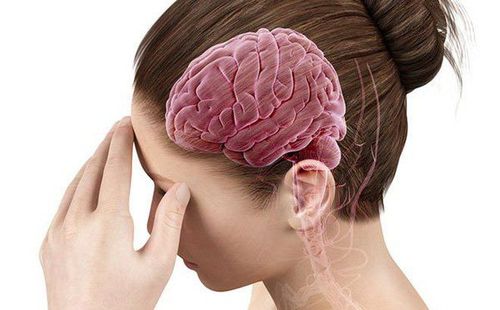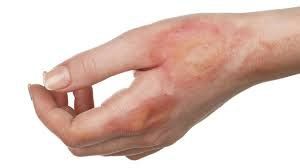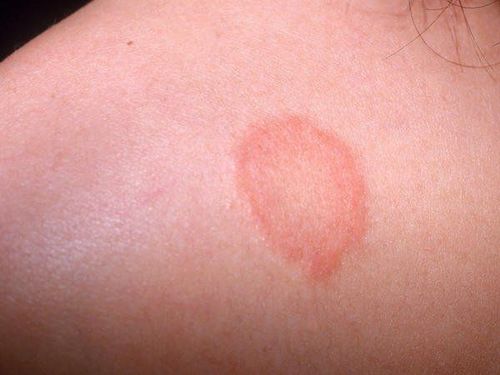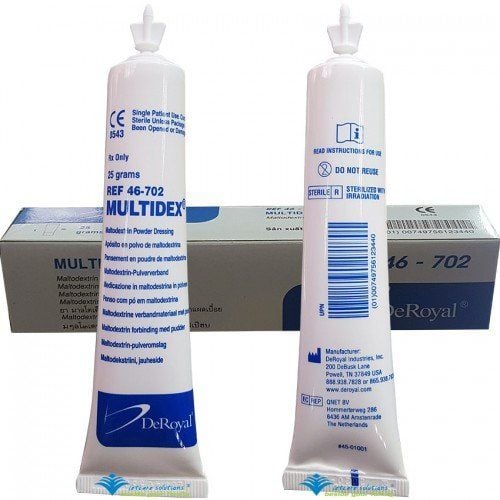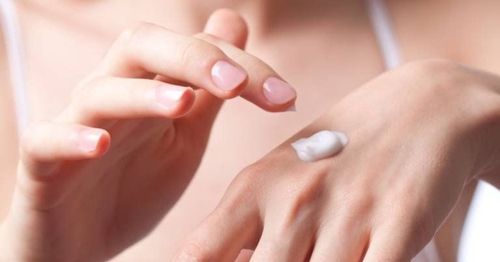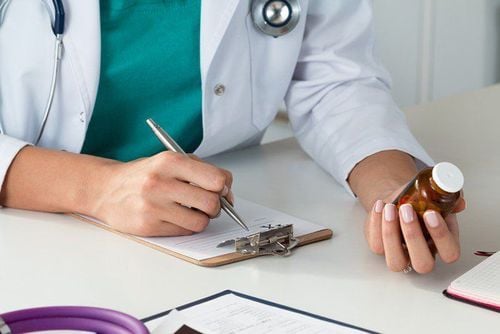This is an automatically translated article.
The article is professionally consulted by Master, Doctor Vu Huu Thang - Emergency Resuscitation Doctor - Emergency Resuscitation Department - Vinmec Ha Long International General Hospital. The doctor has nearly 10 years of experience in Emergency Resuscitation.The phenomenon of skin surface damage when exposed to unusually hot and cold temperatures is a burn. At each different level of the disease, there are unpredictable dangers that not everyone understands.
1. Degrees of Burns
Based on the damage to the skin, there will be 3 main degrees of burns:1st degree: reddened skin, no peeling 2nd level: vesicles appear on the skin, blistered skin Level 3rd: large blistering area, skin turns white. Usually burns will only fall into the above 3 levels, however, in some special cases, severe and dangerous will appear all 3rd degree burn symptoms and also spread beyond the skin surface into bones and tendons.
Specific in each degree of burn:
1st degree The lightest degree of burn is equivalent to the least damage, this degree of burn is called another name, super vertebral burn, because in this case the burn only affects the outermost layer of the epidermis.
Signs for the first degree of burns include: the skin exposed to the heat is slightly red, painful, swollen, when the burn heals, the skin will dry and peel off. Grade 1 burns will usually heal quickly in about 7-10 days, rarely leaving scars.
If the burn is extensive in areas of the skin such as: knees, spine, elbows, arms or shoulders... you should still see a doctor to avoid unnecessary risks later.
At first degree burn, the patient can still stay at home, self-medicate, self-care with simple methods.
2nd Degree A 2nd degree burn will be more severe than 1st degree, the damaged skin is no longer just the topmost layer of skin. At this time, the surface of the skin has become blistered, red, painful. Blisters will have a chance to develop on the surface of the skin. Gradually the skin tissue becomes thick, soft, and scaly in appearance, which is called a fibrinous exudate. Burns on the skin are fragile lesions that need to be cleaned, properly protected with gauze, to avoid infection, and at the same time the wound will heal quickly.
The more blisters appear, the more it shows that the burn is worsening and taking longer to heal. In severe cases, a doctor will prescribe a skin graft.
2nd degree burns usually take about 3 weeks to heal.
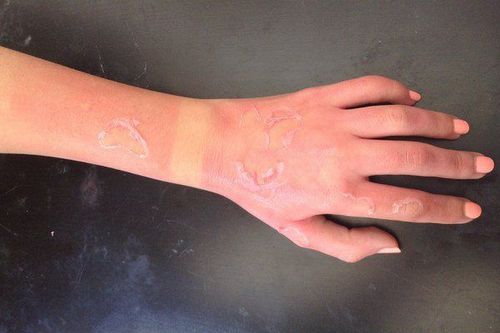
Burn area is important. The more extensive the burn, the higher the mortality rate. Burns more than 15% in adults, burns 8% in children are considered serious.
3rd degree burns, the patient can observe: the skin ring exposed to the temperature becomes waxy and turns white, there are areas of skin that have been tanned to dark brown. This case usually does not appear blisters and especially needs to be corrected through surgery. Because 3rd degree burns are not treated and fully recovered, they will leave sequelae or serious muscle contractions. However, depending on the area of the burn, whether it is severe or light, the recovery time can be concluded.
With 3rd degree burns, the patient should not try to treat at home, but need to go to a medical facility or see a doctor for proper treatment, avoiding any possible complications and sequelae, especially the risk of causing serious complications. died from severe burns.
2. How to relieve burning pain when burned
First degree burns Clean the wound and gently soak it in a small bowl of cool water, it is recommended to soak for at least 5 minutes. Only use cool water, not ice or ice, direct contact with ice can make the wound worse. Use ibuprofen or acetaminophen when pain relief is needed. Using topical anesthetic cocaine, apply to the burn a layer of protective lotion such as a combination of gel or aloe vera cream to soften the damaged skin. Apply antibiotic ointment directly to the burn and liquid gauze to protect the surrounding area. Use a gauze bandage to gently wrap loosely around the burn. Painkillers can be used to make them more comfortable. 2nd degree burns Clean the wound and gently soak in a small bowl of cool water, it is recommended to soak for at least 15 minutes. A wet cloth dipped in cold water can be applied to minor burns for 2-3 minutes a day. Use ibuprofen or acetaminophen when pain relief is needed. Apply antibiotic ointment directly to burns and blisters. Use a dry gauze bandage to cover the burn, changing the bandage once a day. Be sure to wash your hands before washing the burn. Check the burn daily for signs of swelling, pain, and redness. Do not peel the skin from the burn to avoid infection, do not scratch. Use sunscreen before going outside because burns are very sensitive to the sun for 1 year. Seek medical attention when the burn is seriously affecting other parts of the body. 3rd degree burns Remove clothing, clothing, etc., stuck in the burn area, do not use dipping the burn in water or any medication applied to the burn. Raise the burned part above the heart, possibly cover with a cool, damp, clean bandage. Step two can be skipped and get the victim to the hospital immediately. Note: When you have an electrical burn, a chemical burn, you need to go to the hospital as quickly as possible because it can cause serious damage to parts of the body.3. Burn prevention at all levels
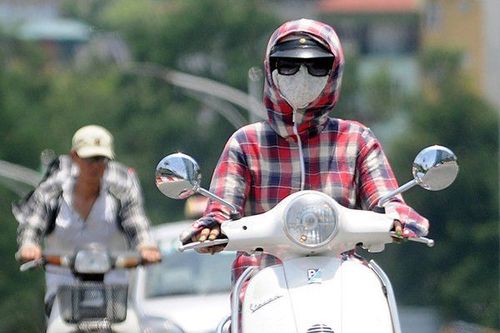
In order to minimize the risk of burns, each person should be careful while working, Stay away from places where there is a risk of burns. Especially at home with young children - the object that is most susceptible to burns, it is even more important to pay attention, because often cases of burns occur at home, in daily activities.
Young children need to stay away from the kitchen area, where the gas cylinder, thermos, etc. can cause burns as much as possible. Always keep a fire extinguisher near the kitchen. Check every month to make sure the smoke detector in the house is stable and working properly. Bathing children should cool first and avoid contact with water before mixing the water at the correct temperature. degrees Keep flammable and dangerous objects such as matches, or lighters... out of reach of small children, in a safe place Use an electrical outlet with a lid or with insulating foil inside. Do not leave long, protruding or tangled power cords in the house, so check that floating wires will always be open. Use gloves when contacting cleaning chemicals. Should use sunscreen, sunscreen when going out in the summer, avoid burning hands, face... For smokers, make sure cigarette butts are not burned. The same filter when thrown away completely extinguished the fire after smoking. Adults in the family should also have a basic knowledge of burn prevention, or first aid when encountering any degree of burn, and should also have a plan ready to respond when there is a risk of burns. Unintended.
Please dial HOTLINE for more information or register for an appointment HERE. Download MyVinmec app to make appointments faster and to manage your bookings easily.





